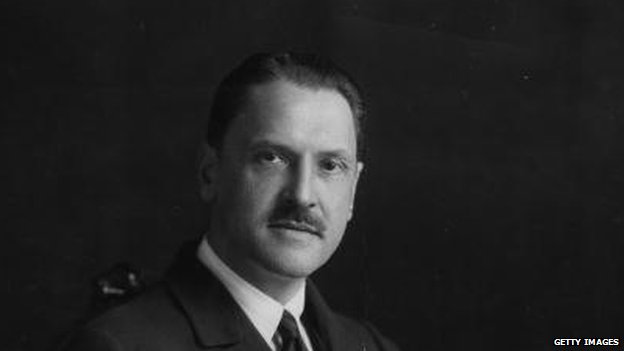This Fritz summary provides an overview of the plotline of the story. The narrator, Shankar, and his friend Jayanto get away from their busy schedules to spend a vacation together in Bundi. The two friends stay at the circuit house, where Jayanto had lived for a short while as a kid. Nostalgia grips Jayanto, and he keeps having flashbacks to his time at the circuit house as a child. The most notable memory recall that Jayanto has is his 12-inch Swiss doll Fritz, which he adored a great deal as a kid. Jayanto remembers slowly how it was during his stay at Bundi that Two dogs destroyed fritz, and it was under a deodar tree in the premises that Jayanto had then buried his favorite doll.
At night, Jayanto was woken up by the feeling that something was crawling over his body, and brown circular marks were found on the quilt, which couldn’t be traced to any small animals like mice or cats by the two friends. The next day, Jayanto reveals to Shankar that his doll Fritz visited him at night. Jayanto’s confession seems nonsensical to Shankar, who decides to get Fritz’s grave dug up so that his friend can see the remnants of the doll and cast aside any paranormal notions of the doll having visited him. However, when the two friends dig out Fritz’s grave with a gardener’s help, they are astonished beyond measure to find a pure white, 12-inch human skeleton.
Fritz: Summary
This Fritz summary delineates the events that take place in the short story.
Jayanto, the story’s protagonist, had always wanted to revisit Bundi, having lived there for a short while as a kid during one of his father’s archaeological work trips. He wished to compare the modern Bundi of that time to his childhood memory of the place. His friend, Shankar, the narrator of the story, was easily convinced. Together, the two friends set aside their busy schedules and stationed themselves at the circuit house at Bundi to enjoy the antiquated town, which took one back to the Rajputana era with its cobbled streets and carved wooden doors.
While sipping tea at the circuit house, Shankar noticed that Jayanto’s spirits were low, for which he blamed the combination of nostalgia and his friend’s sensitive nature. When Jayanto begins talking, we find that he was indeed in a pensive state, reminiscing how small he once felt sitting on the same cane chair as a kid. Both friends decide to take a stroll in their bungalow’s garden. During the stroll, Jayanto excitedly spots a deodar tree that he remembered from his childhood. However, he could not pinpoint why that tree had a special place in his memory, except that it had something to do with a European.
At dinner, we find out the real significance of the deodar tree. By this tree, Jayanto had buried a toy that he was incredibly enamored by – a 12-inch lifelike doll dressed in perfectly detailed Swiss clothing named Fritz. During his childhood Bundi trip, Jayanto had lost his best friend of a doll to two dogs who had mutilated its face while playing with it.
Later that night, Shankar woke up to find a disturbed Jayanto, who claimed that he had felt something walk over his chest. Both friends tried to look for small animals who could have been the culprit but found nothing. However, there was on the quilt circular brown marks. In the morning, Shankar could tell that Jayanto had had troubles sleeping and thought of giving him a tranquilizer later that night.
That morning Shankar and Jayanto left to explore the Bundi fort. For a short while, Jayanto was enthusiastic again as he spotted turrets and pictures that he remembered from his childhood. However, after some time, Jayanto went alone to the terrace and stood there like a zombie. Seeing his friend in that state, Shankar worriedly asked him what the matter was. Then, with some reluctance, Jayanto confessed that he thought it was Fritz who had visited him the night before.
Shankar grew worried about Jayanto’s mental state and decided that he would give him a nerve tonic. Another brilliant idea he had was to dig up the doll’s grave so that his friend could see the remnants of the doll and get the idea out of his head that an old doll was out of its grave visiting him.
Fritz: Critical Appreciation
Jayanto agreed to Shankar’s idea, and they got hold of a gardener to dig up the spot by the deodar tree where Fritz was buried. What the two friends found after they dug open the grave left them both astonished and scared out of their minds. There lay inside the ground a pure white 12-inch human skeleton. The story ends with this cliff-hanger, leaving the readers’ minds flooded with questions and various interpretations.
In this critical appreciation of Fritz by Satyajit Ray, we will evaluate different aspects of the story, such as its plot construction, narrative techniques, setting, and characterization.
The story unravels in the first person, narrated from the point of view of Shankar – the protagonist’s childhood friend and bystander to the events that take place in the story. The fact that the story is narrated from Shankar’s point of view helps the readers get a realistic idea of the story’s events, untarnished by the suppressions and anxious fears of the protagonist himself.
There are mainly four big events in the story: Jayanto finding the deodar tree that triggered his memory of his childhood doll Fritz, Jayanto being paid a visit at night by a mysterious creature who leaves behind prints on the quilt, Jayanto confessing to Shankar that he thought Fritz had visited him, and the two friends digging up Fritz’s grave to find a human skeleton instead of the doll’s remnants. There are many flashbacks to the time Jayanto spent at Bundi as a kid, and these flashbacks are tied into the present seamlessly and with such perfect timing that the transitions from past to present are not only smooth but also effective in crafting an engaging narrative. Apart from these flashbacks, the story has descriptive passages, sketching pen pictures of Bundi and the circuit house, and dialogues exchanged between two friends through which the plot progresses.
Detective fiction was Ray’s forte, and his skill in handling and sustaining suspense is evident in Fritz. From the beginning of the story, Ray shrouds the protagonist’s past at Bundi with anticipation. Before us, we have sometimes reflected and sometimes disturbed Jayanto stitching together his memory to recall exactly what happened at Bundi that had left such a strong impression on him. The sense of foreboding that looms heavily over the story is further accentuated by the story’s setting – the historical town of Bundi with its forts and old streets and houses. The foreboding and suspense are taken to a climactic point at the end of the story, where they are replaced by horror – once a human skeleton is unearthed from the ground. Ending this story with a cliff-hanger is a masterly stroke by Ray, as it keeps the reader hooked to the plot even after they have set the story down.
Ray has also handled characterization adeptly in this story. Jayanto is sketched as an emotional and sensitive man who is troubled by paranoia and memories of the past; whereas, Shankar is diametrically opposite with his practical approach to everything. This contrast between the characters’ defining traits adds balance to the story, such that the supernatural and the real exist together. In fact, both characters present a beautiful bond of friendship between two childhood friends, despite the fact that age has matured them into very different people. The patient and steady care with which Shankar handles Jayanto when acting paranoid sheds light on the beautiful equation that the two men share.
The overarching theme of the story Fritz comprises memory and the paranormal, showing how suppressed memories past can continue to seep into the present if the past has not been processed healthily. The other themes explored in this short story are nostalgia, childhood, and a strong tie of friendship between two men.
Fritz: Theme
The central theme of the story, Fritz, seems to revolve around the existence of the paranormal, with Jayanto getting a mysterious visitor with small footsteps at night and the skeleton that was found in the place where Fritz had been buried. However, if we delve deeper, we realize that the actual theme of the story is memory and how it can play tricks with our head if the past event it ensues from has not been processed healthily by the mind.
From the beginning of the story, we can understand that something is weighing heavy on Jayanto’s mind. He was excited about coming to Bundi, but once there, he seems distracted, pensive, and troubled by the intermittent burst of memories caused upon visiting the place where he had experienced something tragic – the loss of his favorite toy and childhood companion. Memories of the toy begin to haunt him. This preoccupation with his childhood toy and its freshly unearthed memories even spiral him into a paranoid episode where he thinks the doll visited him at night. One has no way of knowing what the doll was and what was buried by the deodar tree because these memories of the protagonist are heavily suppressed and distorted. And it is this dual suppression and distortion of memory that play a central role in the short story.
The other theme found in Fritz is that of childhood. Childhood plays a big role in shaping the adult one becomes as the foundational neurons of one’s brain are formed during childhood. Perhaps, the protagonist faced some trauma in Bundi when he was young, which led to foreboding and paranoia upon returning to the same place as an adult. The reason why Jayanto wished to come to Bundi was to compare the Bundi of modern times to his childhood image of the place. The theme of childhood runs in other parts of the story too, where Jayanto says the chairs feel small as an adult, whereas as a kid, he could have sat cross-legged on them.
Friendship is another theme that surfaces when we read the story. Jayanto and Shankar are opposites of each other, but the beautiful way they both contrast and balance each other’s nature is a pleasure to observe. Jayanto is sensitive and anxious, whereas Shankar is practical and steadfast. The way in which Shankar takes care of Jayanto during his paranoid episodes by saying soothing words and then deciding to actually dig Fritz’s grave to give Jayanto some peace of mind shows the strength of bonds made during childhood.
Fritz: Analysis
The plot of the short story Fritz has been handled by Satyajit Ray with tremendous economy and suspense, making for an excellent read. However, the story leaves a lasting impression on the reader because of its ending. Throughout the story, there is a sense of foreboding, and one suspects a paranormal presence. This foreboding and supernatural ambiance reaches its climactic point at the end of the story when a human skeleton is found in the grave instead of the doll’s remnants. Instead of giving closure to the readers, this ending fills their minds with more questions and interpretations. One begins to wonder if Fritz was a person that had died during the time Jayanto was at Bundi as a child – and his mind had distorted the memory of that tragedy by turning the person into a doll inside Jayanto’s mind. A more practical explanation is that perhaps that sinister doll had been made out of a human skeleton. This ambiguous ending makes the readers engage with the story more after they have set it down.
Some online learning platforms provide certifications, while others are designed to simply grow your skills in your personal and professional life. Including Masterclass and Coursera, here are our recommendations for the best online learning platforms you can sign up for today.
The 7 Best Online Learning Platforms of 2022
- Best Overall: Coursera
- Best for Niche Topics: Udemy
- Best for Creative Fields: Skillshare
- Best for Celebrity Lessons: MasterClass
- Best for STEM: EdX
- Best for Career Building: Udacity
- Best for Data Learning: Pluralsight













